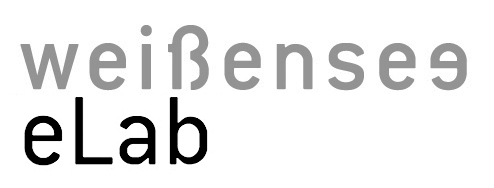Location: LIWOLI 10, Kunstuniversitat Linz, Austria
Time: 15th April, 2010, 11-17h

In this workshop, we will construct textile sensors and circuitry from conductive fabrics and thread, with ordinary textile materials such as poppers, fabrics and yarns. Instead of soldering and wiring, we will saw, iron and knit these sensors and circuits.
Participants will be introduced to basic electronics and range of fabric sensor examples such as push, bend, tilt and stroke sensors. After understanding how it works, we will try to implement our own fabric sensor designs and connect to a simple LED fabric circuit on a T-shirt. The placement of sensors and circuitry will be designed considering interaction scenarios as well as aesthetic choice. The materials used are cheap and off the shelf, so that the practice introduced in the workshop can be continued at home.
Participants are asked to bring their own used T-shirt to the workshop.
Battery pouch:
Neoprene battery pouches
Double AA batteries pouch stencil
Single AA battery stencil (long leg)
3V button battery pouch
Example sensors:
Fabric Button
Fabric Potentiomater
Bend Sensor
Tilt Sensor
Stroke Sensor
Conductive Pompom
circular knit stretch sensor
Material Link:
Conductive Fabric
We had Stretch Conductive Fabric and Soft and Safe Shielding Fabric NEW from LessEMF
Conductive Thread
We had Silver Plated Nylon 117/17 2ply, Silver Plated Nylon 234/34 4ply and Resistive thread 66 Yarn 22+3ply 110 PET
Conductive Yarns
We had Nm 10/3 and Nm 50/2 from Schoeller
If you are interested in purchasing Scheoller yarn, please check CONDUCTIVE YARN – COLLECTIVE PURCHASE
Some of the Workshop Outcome

Isabella’s 3D crochet tilt sensor

Adriana’s Mustache t-shirt

Stroke sensor in progress

Little sewing mistake!

Sabina’s three button system
Markus’s tilt wristband
Natalia’s sound stretcher
kike’s conductive pompom triggerer
Mar’s game t-shirt in action
pictures on flickr
This workshop is part of a LIWOLI event. Here is the link >>http://linz.linuxwochen.at/









can i get the circuit diagram of this sound sensing t-shirts and can i get the info of components used in it plz…..
I am not sure which t-shirt you refer to.. The pictures and videos on this post are from the workshop held in Linz, and the projects are developed by the participants. If you could specify which t-shirt you mean, I could probably tell you which components they have used